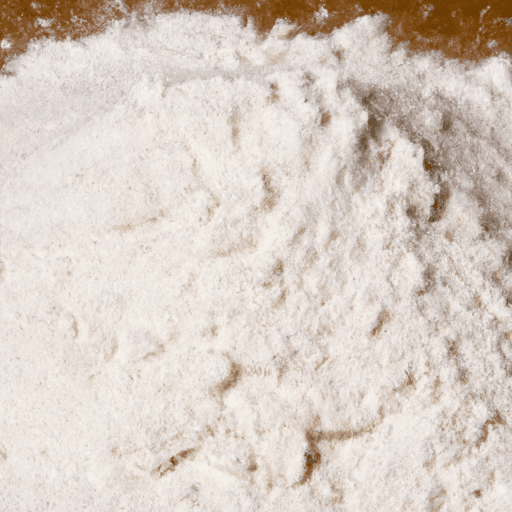Discover the Versatility of Gluten-Free All-Purpose Baking Flour
Are you looking for a versatile and allergen-friendly alternative to traditional wheat flour? Look no further than gluten-free all-purpose baking flour! Whether you follow a gluten-free diet or simply want to experiment with different flavors and textures in your cooking, this exceptional alternative can be a game-changer in the kitchen.
The Taste and Texture You Crave
Gluten-free all-purpose baking flour offers a neutral flavor profile, making it an excellent substitute in a wide range of recipes. Made from a combination of grains, starches, and sometimes legumes, this fine flour blend mimics the mouthfeel of wheat flour without compromising taste.
Thanks to advanced blending techniques, today’s gluten-free all-purpose baking flours strive to replicate the texture and tenderness achieved with traditional flour. So whether you’re baking cookies, muffins, or bread, you can expect satisfying results.
Common Uses in Cooking
The possibilities are endless when it comes to utilizing gluten-free all-purpose baking flour in your culinary endeavors. Let’s explore some popular applications:
1. Baking
From cakes and pastries to bread and pizza dough, gluten-free all-purpose baking flour performs admirably in baked goods. Its versatility allows you to recreate your favorite recipes without sacrificing taste or texture. Simply substitute the wheat flour for an equal amount of gluten-free all-purpose baking flour and witness your treats rise to perfection.
2. Coating and Breading
Craving crispy chicken tenders or a golden-fried fish fillet? Gluten-free all-purpose baking flour is your secret weapon. Use it as a base for batters or as a coating for chicken, fish, or vegetables, ensuring a delightfully crunchy texture.
3. Thickening Agent
When your sauces, gravies, or soups need a little thickening power, reach for gluten-free all-purpose baking flour. The starches in the blend readily absorb liquids, helping to create a smooth and velvety texture.
Nutritional Value
Gluten-free all-purpose baking flour not only caters to those with dietary restrictions but can also be a nutritious choice for anyone seeking variety. While the nutrient content can vary between brands, this flour blend often contains a mix of whole grains, such as brown rice, quinoa, millet, and sorghum.
Additionally, many gluten-free all-purpose baking flours are fortified with essential vitamins and minerals, such as iron and B vitamins, to provide a wholesome substitute for wheat flour.
Fun Facts and History
Did you know that gluten-free all-purpose baking flour was created to cater to the needs of individuals with celiac disease? Celiac disease is an autoimmune disorder triggered by gluten, a protein found in wheat, barley, and rye. Gluten-free flours gained popularity as more people recognized the importance of accommodating dietary restrictions while still enjoying their favorite foods.
Nowadays, gluten-free all-purpose baking flour is not only a practical choice for those with celiac disease but also for individuals with gluten sensitivities or who choose to follow a gluten-free lifestyle. As demand for gluten-free products continues to rise, innovative baking flour blends have emerged, further enhancing the culinary experiences of people around the world.
Embrace the Possibilities
Whether you’re on a gluten-free journey, exploring new flavors, or simply curious about alternative ingredients, gluten-free all-purpose baking flour is a must-have in your pantry. From decadent desserts to savory delights, this versatile flour blend offers endless possibilities without compromising on taste or texture. So go ahead, get creative, and let gluten-free all-purpose baking flour elevate your cooking adventures to new heights!
Gluten-Free All Purpose Baking Flour
Origin: Gluten-free all-purpose baking flour is a type of flour that is specifically formulated to be free of gluten. Gluten is a mixture of proteins found in cereal grains, such as wheat, barley, and rye. The gluten-free flour is a substitute for traditional wheat flour, making it suitable for individuals who are sensitive to or have celiac disease, an autoimmune disorder triggered by gluten.
Common Uses: Gluten-free all-purpose baking flour can be used as a replacement for traditional wheat flour in various recipes. It is commonly used in gluten-free baking to make bread, cookies, cakes, and other baked goods. It can also be used as a thickening agent for sauces, gravies, and soups.
Nutritional Benefits: Gluten-free all-purpose baking flour is often made from a combination of different gluten-free grains and starches, such as rice flour, tapioca flour, potato starch, and sorghum flour. These ingredients can contribute to a well-balanced diet as they contain essential nutrients like fiber, vitamins, and minerals.
Unique Properties: Gluten-free all-purpose baking flour lacks the ability to develop gluten, which is responsible for providing structure and elasticity in baked goods made with regular wheat flour. As a result, gluten-free baking flours often require additional binders or gums, such as xanthan gum or guar gum, to help mimic the binding properties of gluten.
Historical Significance: The demand for gluten-free products has significantly increased over the past decades due to the rise in individuals diagnosed with celiac disease and those adopting a gluten-free lifestyle. As a result, there has been a growing availability and variety of gluten-free all-purpose baking flours to cater to these dietary needs.




Use the share button below if you liked it.
It makes me smile, when I see it.